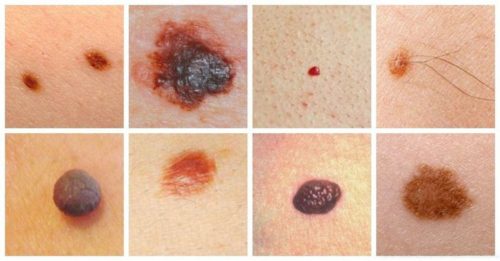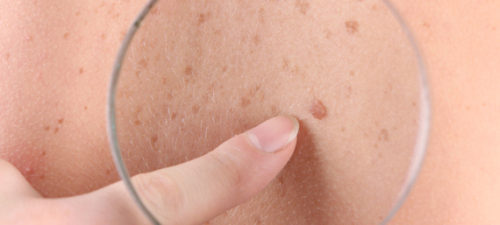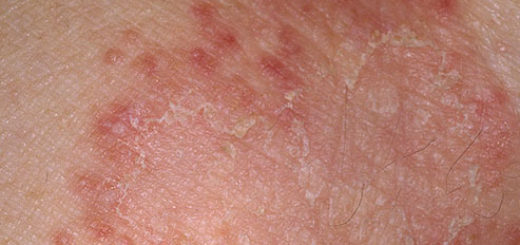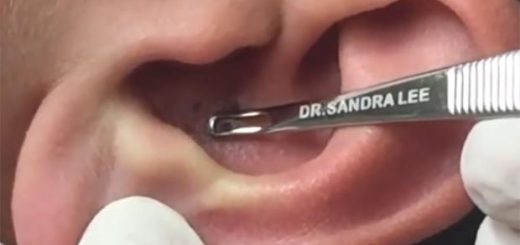10 Ways To Get Rid of Moles On Skin
Moles are common growths on skin which are cancerous or non-cancerous.

- Different types of moles include:
- Irregular moles which are flat, irregular and have multiple colors. There is a small risk of turning cancerous.
- Regular moles are usually small, uniformly colored, and are flat or raised. They are non-cancerous
- Skin cancer moles are also referred to as melanomas. They are characterized by an asymmetrical and irregular shape and red moles on skin.
Moles appear when skin cells grow in a cluster instead of being spread out. There are various ways to get rid of moles on your skin.
1. Tee Tree Oil
Tee tree oil has antibacterial properties that protects the skin from any secondary infections. It is a good treatment for moles which are raised and have shallow roots. The process of treating your mole with tee tree oil includes:
– Rubbing a small amount of the oil on your mole using a small relevant item such as a Q tip
– Cover the affected area with a bandage.
The bandage should stay for an hour. The process should be repeated twice daily for a month. Before using the oil, you should test it to know whether you are allergic to it or not. You can apply a small amount on an unaffected area and see the results. If you feel a burning sensation and it persists for some time, then you are probably allergic to the oil. If you feel a sting but it fades within a short time, then it is safe to use the oil.
2. Apple Cider Vinegar
Organic apple cider vinegar is the best to use. The process involves:
– Dip some cotton into the apple cider vinegar and press it on the mole. Fasten it using a gauze and let it stay for an hour. It should be done once every day.
– Scrap the surface of the mole using an emery board and apply ACV until the affected area turns white. You can then leave it to dry on its own. This process is optional but it makes the treatment more effective.
Before applying ACV, it should be tested the same way as tee tree oil. If the sting lasts for a short while and then disappears, it is safe to use ACV. If the sting persists, you should not use ACV since this is a sign of an allergic reaction to it.
3. Grapefruit Seed Extract
Due to its flavanoids and vitamin E, grapefruit is a good remedy for moles.
– A drop of the extract should be applied on the mole and covered for a few hours using a gauze or a bandage. The process should be repeated 2 – 3 times daily for a month.

4. Aloe Vera
It is suitable all including those with sensitive skin.
– Cut an aloe leaf into half then apply the gel on the mole
– Leave it on the mole for 4 hours
The process should be repeated thrice a day for a month or more until the mole is completely removed from the skin.
5. Garlic
Garlic has antibacterial properties and enzymes which are efficient in breaking down the cell structure of moles. It is most effective on flat moles since the results can be seen almost immediately after the dark pigmentation is lightened. The advantage of using garlic is that it works fast and effectively.
– Mash a clove of garlic to a paste
– Apply petroleum jelly on the area around the mole
– Apply the paste on the mole, cover it and leave it overnight
Alternatively, you can cut some garlic and place the cut side on the mole. Fasten it with a gauge or bandage and let it stay overnight.
The process should be repeated once daily until the mole falls off. Positive results will be seen within a short time.
6. Castor Oil
It works best in removing moles when it is combined with baking soda. Castor oil disperses pathological growth and prevents formation of scar tissue after the mole falls off. When combined with baking soda, it forms an effective remedy although it is slow.
– Create a gummy texture by adding 4 drops of castor oil to a teaspoon of baking soda.
– Apply it on the mole, cover with a gauge or bandage and leave it overnight.
– Wash off the mixture when you wake up
7. Frankincense
It has been used for medicinal purposes among other things since hundreds of years ago. Just like apple cider vinegar and tee tree oil, some may be allergic to frankincense. Test it on an unaffected area first. Frankincense can be used either topically or in a bath.
– A teaspoon of frankincense should be added to 8 teaspoons of olive oil. The mixture should be applied on the moles and left to be completely absorbed.
– When using it in a bath, 3 drops of frankincense oil should be mixed with 6 drops of lavender oil, a cup of baking soda and a cup of sea salt. Add the mixture to a hot bath and immerse yourself for 15 minutes each day.
8. Freezing
This can be done by a dermatologist. Liquid nitrogen is used to freeze the mole and it is broken off in the process. A blister is formed which heals after a short time. A scar may be formed but it will not be permanent.
9. Laser Treatment
The treatment is suitable for flat brown or black mole on skin. The treatment can be performed by a dermatologist and it may take up to 3 visits to fully remove the mole.
10. Surgical Shave
It is suitable for benign moles which have a stalk that is well defined. Scars will not be formed if the procedure is done properly.
Other Useful Tips
– Always visit a dermatologist to know whether your mole is cancerous or non-cancerous. Even if it is non-cancerous, it would be wide to ask your dermatologist questions to know whether your mole has a potential of developing into a cancerous one.
– Before using any home remedies, test them out to know whether you have any allergic reaction to the ingredients.
– Do not try to perform any surgery by yourself to remove skin moles no matter how minor it looks. You may make the situation worse and you are prone to infections and permanent scars.


